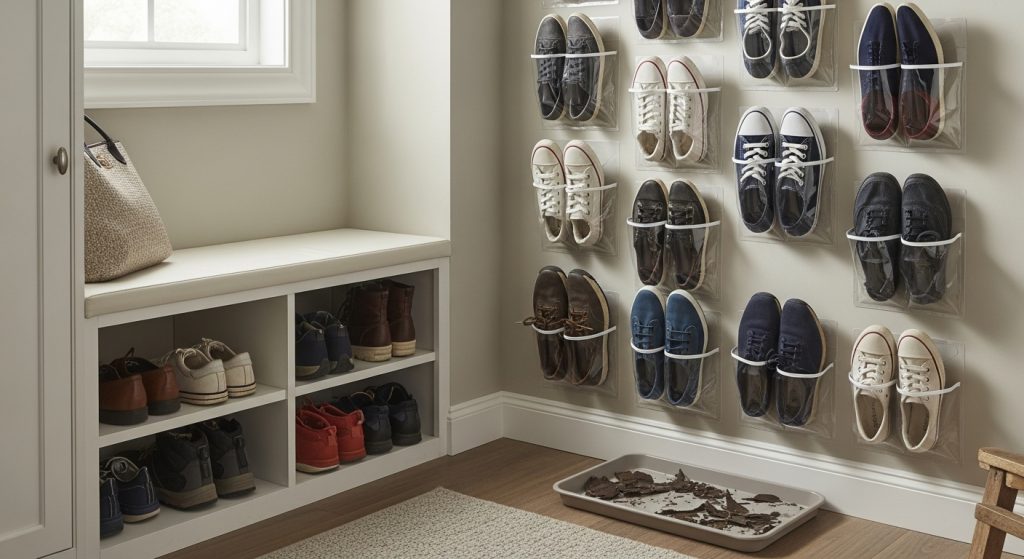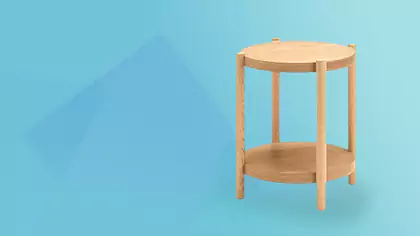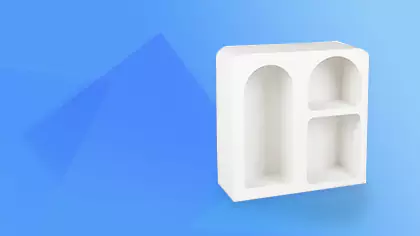Learning how to organize shoes in small spaces without clutter is a transformative skill for anyone living in compact apartments or homes with limited storage. Shoes are notoriously bulky and awkward to store. In a small entryway or closet, they can quickly accumulate into a chaotic pile, creating visual stress and making it difficult to find the pair you need. The solution lies in a strategic combination of ruthless decluttering, clever space-saving furniture, vertical thinking, and smart organizational habits.

This definitive guide provides an expert, step-by-step framework. It offers professional tips and innovative ideas to help you conquer shoe clutter and create a beautifully organized, serene, and functional space, no matter how limited your square footage.
What is the Core Philosophy of Organizing Shoes in Small Spaces?
The core philosophy is maximizing storage efficiency while minimizing visual clutter. This requires a shift in mindset: every pair of shoes must earn its place, and every inch of storage must be utilized thoughtfully. It involves decluttering aggressively, choosing storage solutions designed for compactness, utilizing vertical space, and implementing systems that make tidiness easy to maintain.
This approach recognizes that in a small space, visual calm is paramount. Shoe clutter is one of the fastest ways to make a room feel cramped and disorganized. Therefore, the goal is not just to store shoes, but to do so in a way that enhances the overall feeling of order and spaciousness. This often means prioritizing concealed storage and choosing solutions that blend seamlessly with the decor. The positive impact of an organized home environment on mental well-being is widely acknowledged.
Step 1: Why is Ruthless Decluttering the Essential First Step?
Ruthless decluttering is the essential first step because you cannot organize clutter. Before investing in any storage solutions, you must significantly reduce the number of shoes you need to store. Most people own far more shoes than they regularly wear. Paring down your collection is the single most impactful action you can take to solve shoe storage problems in a small space.
This initial purge frees up valuable space and simplifies the entire organization process. It forces you to be honest about your habits and priorities. Holding onto shoes you never wear is the primary obstacle to achieving a clutter-free environment.
How Do You Begin the Shoe Decluttering Process?
Begin by gathering all of your shoes from every storage spot (closets, entryway, under the bed) into one central location. Seeing the entire collection at once provides a realistic perspective on the volume you are dealing with. This visual impact is often a powerful motivator for letting go.
What Questions Should Guide Your Purge?
Go through each pair of shoes and ask yourself these honest questions:
- Have I worn these in the last year? (If not, why are you keeping them?)
- Do they fit comfortably? (Shoes that pinch or rub rarely get worn).
- Are they in good condition? (Are they beyond reasonable repair?)
- Do they fit my current lifestyle and style? (Do they match your clothes? Do you have occasions to wear them?)
- Do I have duplicates? (How many pairs of black flats do you really need?)
- Would I buy these today if I saw them in a store? Be critical. Keep only the shoes you truly love, wear regularly, and that serve a distinct purpose in your wardrobe.
What is the “One-Year Rule”?
The “One-Year Rule” is a simple but effective decluttering guideline. If you have not worn a pair of shoes in the past 12 months (excluding highly specialized items like formal wear or specific sports gear), it is a strong candidate for decluttering. This rule helps to overcome the “maybe someday” justification for keeping unworn items.
How to Handle Sentimental Shoes?
Shoes with strong sentimental value (like wedding shoes or a baby’s first pair) can be treated differently. If they are truly special, consider storing them properly in a keepsake box elsewhere, rather than taking up valuable space in your primary shoe storage area. Alternatively, take a photo to preserve the memory and let the physical item go.
What Should You Do with Decluttered Shoes?
Once you have decided which shoes to part with, choose a responsible disposal method.
- Donate: Shoes in good condition can be donated to charities or thrift stores.
- Sell: High-value or gently used shoes can be sold online or through consignment shops.
- Recycle: Some programs specifically recycle old footwear. Look for local options.
- Discard: Only discard shoes that are truly beyond repair or donation. Getting unwanted shoes out of your home quickly prevents second-guessing.
Step 2: How Can You Maximize Vertical Space?
Once your collection is pared down, maximizing vertical space is the next crucial strategy for how to organize shoes in small spaces without clutter. Floor space is precious; wall space and the height within closets or cabinets are often underutilized. Thinking vertically allows you to store more shoes within a smaller footprint.
This approach is fundamental to small-space living. By drawing storage upwards, you keep walkways clear and create a less crowded visual impression.
Why Are Wall-Mounted Shoe Racks So Effective?
Wall-mounted shoe racks or shelves are incredibly effective because they utilize empty wall space and keep shoes completely off the floor. This creates a much cleaner look and makes vacuuming or sweeping easier. Options include:
- Floating Shelves: Simple shelves where shoes can be lined up. Best for visually appealing shoes.
- Pocket Organizers: Fabric or plastic organizers with individual pockets mounted on the wall.
- Specialized Racks: Racks designed to hold shoes at an angle or vertically. Our guide to wall-mounted shoe cabinet ideas to save floor space showcases many stylish examples. Ensure secure mounting, especially for heavier items.
How Do Over-the-Door Organizers Utilize Hidden Space?
Over-the-door organizers are a classic space-saving solution, perfect for closet doors or even the back of a bedroom door. They typically feature multiple pockets made of fabric, mesh, or clear plastic.
- Pros: Utilize completely hidden space, require no installation, very affordable.
- Cons: Shoes are visible, pockets may not fit bulky shoes, can prevent doors from closing fully. These are excellent for storing frequently worn flats, sandals, sneakers, and children’s shoes.
What is the Benefit of Tall, Slim Shoe Towers?
Tall, slim shoe towers or cabinets are designed to maximize storage within a minimal floor footprint. They utilize vertical height effectively. These units often fit neatly into narrow spaces beside a closet, in a corner, or within a small entryway. Look for designs that are stable and consider anchoring taller units to the wall for safety. Rotating models offer easy access to all stored pairs.
Step 3: How to Choose Space-Saving Shoe Furniture?
Choosing furniture specifically designed for shoe storage in small spaces is key. Look for pieces with slim profiles, clever mechanisms, or multi-functional designs that offer maximum storage within minimal dimensions. Effective shoe cabinet design for small spaces prioritizes compactness.
What Are the Advantages of Slim-Profile Shoe Cabinets?
Slim-profile shoe cabinets are a game-changer for narrow hallways and tiny entryways. These cabinets are often only 6-10 inches deep. They use clever internal mechanisms, like tilt-out drawers or angled shelves, to store shoes vertically or semi-vertically. This allows them to hold a surprising number of pairs while sitting almost flush against the wall. They typically offer concealed storage, keeping the entryway looking tidy.
How Do Tilt-Out Mechanisms Work?
Tilt-out shoe cabinets are a particularly popular slim design. They resemble a shallow console table or cabinet. The “drawers” pivot open from the top or bottom on hinges. This reveals compartments where shoes are stored vertically, often heel-to-toe or at a steep angle. This ingenious mechanism allows for significant storage capacity within an extremely shallow footprint.
Why Consider Multi-functional Furniture?
Multi-functional furniture is essential for small-space living. Pieces that combine shoe storage with other necessary functions save space and reduce the number of furniture items needed.
- Storage Benches: Provide seating for putting on shoes plus cubbies, drawers, or lift-top storage underneath.
- Storage Ottomans: Offer hidden shoe storage inside while doubling as seating or a footrest.
- Console Tables with Shoe Shelves: Combine an entryway landing strip with discreet shoe storage below. Our guide to multifunctional entryway furniture ideas with storage explores these versatile options.
Step 4: How Can You Utilize Existing and Unconventional Spaces?
Often, the best storage solutions involve utilizing spaces you already have but may be underusing. Thinking creatively about closets, under-bed areas, and even furniture placement can reveal hidden shoe storage potential.
How to Maximize Closet Floor and Shelf Space?
The floor of a closet is often a dumping ground for shoes. Maximize this space by:
- Adding Low Shelves: Install simple, low shelves specifically for shoes.
- Using Stackable Organizers: Clear plastic shoe boxes or stackable wire racks utilize vertical space on the floor or on existing shelves.
- Employing Shelf Dividers: Use shelf dividers on deeper shelves to create neat rows for shoes. Treating closet space as prime real estate is key.
Why is Under-Bed Storage Ideal for Out-of-Season Shoes?
The space under the bed is perfect for storing out-of-season footwear or shoes worn less frequently. Use shallow, rolling storage bins or zippered fabric bags designed specifically for under-bed use. This keeps seasonal shoes protected from dust while freeing up valuable space in your entryway or main closet for the shoes you wear regularly. This seasonal rotation is crucial for managing shoe collections in small spaces.
Can You Use Baskets on Open Shelves or Bookcases?
If you have open shelving units or bookcases elsewhere in your home, attractive woven baskets can serve as discreet shoe storage. Assign a basket to each family member or categorize by shoe type. This keeps shoes contained and hidden while adding a decorative, textural element to the shelf. Choose baskets with lids for a tidier look.
Step 5: What Are Smart Internal Organization Tricks?
Once you have your primary storage furniture or space, implementing smart tricks inside those spaces can dramatically increase capacity and maintain order. These shoe storage ideas focus on maximizing every cubic inch.
How Do Shoe Stackers Double Your Capacity?
Shoe stackers are simple but ingenious plastic devices. They allow you to place one shoe on a small platform directly above the other shoe of the pair. This effectively cuts the horizontal space needed for each pair in half. They are particularly effective for flatter shoes like sneakers, sandals, and flats stored on shelves or in cubbies. They are an inexpensive way to instantly double your storage capacity in many situations.
What is the “Alternating Heel-Toe” Method?
When lining up shoes on a flat shelf, the simple trick of alternating each pair (one shoe heel-out, one shoe toe-out) can save a surprising amount of space. The wider heel area of one shoe fits neatly beside the narrower toe area of the next. This allows you to fit more pairs onto a single shelf.
Why Use Clear Shoe Boxes?
Clear shoe boxes offer several organizational benefits.
- Stackability: They allow you to stack shoes vertically, utilizing height within a closet or on a shelf.
- Visibility: The clear plastic allows you to instantly see which pair is inside without opening the box.
- Protection: They protect shoes from dust, crushing, and pests. While they take up slightly more space than storing shoes loose, the organizational benefits and protection they offer are significant, especially for less frequently worn or valuable shoes. The market for home organization products continues to grow.
How Can Shelf Dividers Maintain Order?
On longer shelves, shoes can easily become jumbled. Simple shelf dividers (either tension-based or clip-on) create designated “lanes” for each pair or type of shoe. This prevents shoes from toppling over onto each other and maintains neat rows, making it easier to see and access your collection.
Step 6: What Are Creative DIY and Budget-Friendly Ideas?
Achieving organized shoe storage does not require expensive custom solutions. Many creative and budget-friendly farmhouse console makeovers or DIY projects can provide effective and stylish storage using simple materials. These ideas are perfect for renters or those looking for unique, personalized solutions.
How Can You Repurpose Wooden Crates or Baskets?
Wooden crates (like old wine or apple crates) can be stacked and secured together to create rustic, modular cubbies for shoes. Woven baskets can be labeled and used on shelves or under benches to hold pairs neatly. These items can often be found inexpensively at thrift stores or flea markets.
What About Building a Simple Ladder Rack?
A simple wooden ladder, either vintage or newly built, can be leaned against a wall to create an angled shoe rack. The rungs serve as shelves. This provides vertical storage with a minimal footprint and adds a decorative, rustic touch. Ensure the ladder is stable and positioned securely.
How to Use Tension Rods in Alcoves?
If you have a small alcove or nook, installing a few tension rods horizontally can create simple, floating “shelves” for shoes, particularly heels which can hook over the rod. This utilizes awkward spaces effectively without requiring any drilling.
Step 7: How Do You Maintain the System Long-Term?
The final and most crucial step in how to organize shoes in small spaces without clutter is establishing habits to maintain the system long-term. An organized space will quickly revert to chaos without consistent effort. Simple daily and seasonal routines are key to lasting success.
Why is a Daily “Put Away” Routine Essential?
Implement a strict daily routine of putting shoes away immediately upon entering the home or taking them off. Avoid the temptation to leave them by the door “just for now.” This simple habit, practiced by everyone in the household, prevents the initial buildup of clutter. It takes only a few seconds each day but makes a massive difference. Establishing routines is a core principle of effective organization.
How Often Should You Re-Declutter?
Even with good habits, shoe collections tend to grow. Schedule a quick re-declutter session at least twice a year, typically when transitioning between warm and cold weather seasons. Re-evaluate your collection using the same critical questions as the initial purge. Remove any shoes that are no longer serving you.
What is the Importance of the “One In, One Out” Rule?
The “one in, one out” rule is a powerful tool for preventing accumulation. For every new pair of shoes you bring into your home, commit to removing one old pair. This keeps your total number of shoes constant, ensuring your storage system remains adequate. It forces you to be more mindful about new purchases.
Conclusion
Learning how to organize shoes in small spaces without clutter is achievable with the right strategies and a commitment to consistency. By ruthlessly decluttering your collection, maximizing vertical space with smart storage solutions, choosing space-saving or multi-functional furniture, utilizing existing nooks, and implementing clever internal organization tricks, you can conquer shoe chaos. Maintaining this system through simple daily habits ensures your entryway and closets remain serene, functional, and stylish sanctuaries, proving that even the smallest space can be beautifully organized.











